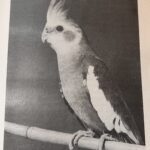
Are seeds high in fat?
It seems almost universally believed that seeds are high in fat. I’ve talked about seeds and fat in a previous article but wanted to address this myth specifically.
First, I took a look at a wide variety of seed mixes and came up with 8 seeds that appear to be most commonly used:
- Millet
- Oats
- Canary grass
- Sunflower
- Safflower
- Hemp
- Nyger
- Pumpkin
So, let’s look at their fat percentages:
| Seed | % fat |
|---|---|
| Millet | 10% |
| Oats | 14% |
| Canary grass | 17% |
| Sunflower | 62% |
| Safflower | 58% |
| Hemp | 74% |
| Nyger | 69% |
| Pumpkin | 55% |
| Average | 44% |
Sources:
- Compositional Analysis of Whole Grains, Processed Grains, Grain Co-Products, and Other Carbohydrate Sources with Applicability to Pet Animal Nutrition—Foods—March 2016
- MyFitnessPal (received an 83 rating by Consumer Reports)
- Nutrient Composition of Canaryseed Groats
As I mentioned in my other article, recommended fat percentages for humans fall in the 20-40% range, so 44% is definitely on the high side.
Seeds also definitely fall into very low fat and high fat categories.
- Very Low fat: Millet, canary grass, oats
- High fat: Sunflower, safflower, hemp, nyger, pumpkin
The budgie diet I used in that article contained 66% millet, 17% oats, and 8% canary grass seed (total of 97% of the seed content). The fat content of those seeds fall in the 10-17% range, making it extremely low fat.
I looked at the top 3 seed ingredients of a number of species-specific seed mixes sold by Kaytee. I’ve highlighted the high fat seeds in bold.
If I were to make an unscientific assumption that the mix of the 3 top seeds are similar to the mix I analyzed, I also listed an estimated fat percentage.
Cockatiel: Canary grass, millet, safflower (17%)
Parakeet: Canary grass, millet, oats (14%)
Lovebird: Sunflower, canary grass, millet (44%)
Macaw: Sunflower, safflower, pumpkin (55%)
Finch: Millet, canary grass, oats (10%)
Conure: Millet, safflower, sunflower (21%)
So, this relatively unscientific analysis shows cockatiel, parakeet, and finch to be well below the minimum recommended fat content for a human diet. Conure is slightly above the minimum. Lovebird is slightly above the range and macaw is decidedly above the range.
Conclusion
My point in writing this is to illustrate two things:
- Seeds are not universally high in fat. The range of 10-74% fat is extremely wide
- The important thing is the mix of seeds in determining the actual fat content
Unfortunately, manufacturers typically report very limited nutrient information on their products, so there’s no way to be certain, even for a processed (pelleted) diet.
Having said all that, as I mentioned in an article of why the “all seed” diet is bad, it’s carbohydrate content that we should be concerned about here. I would expect cockatiels, parakeets, finches to fare very poorly on these Kaytee diets when it comes to obesity and other diseases. The others I would expect to do reasonably well as long as the diets have sufficient protein and seed is not 100% of their diet.

